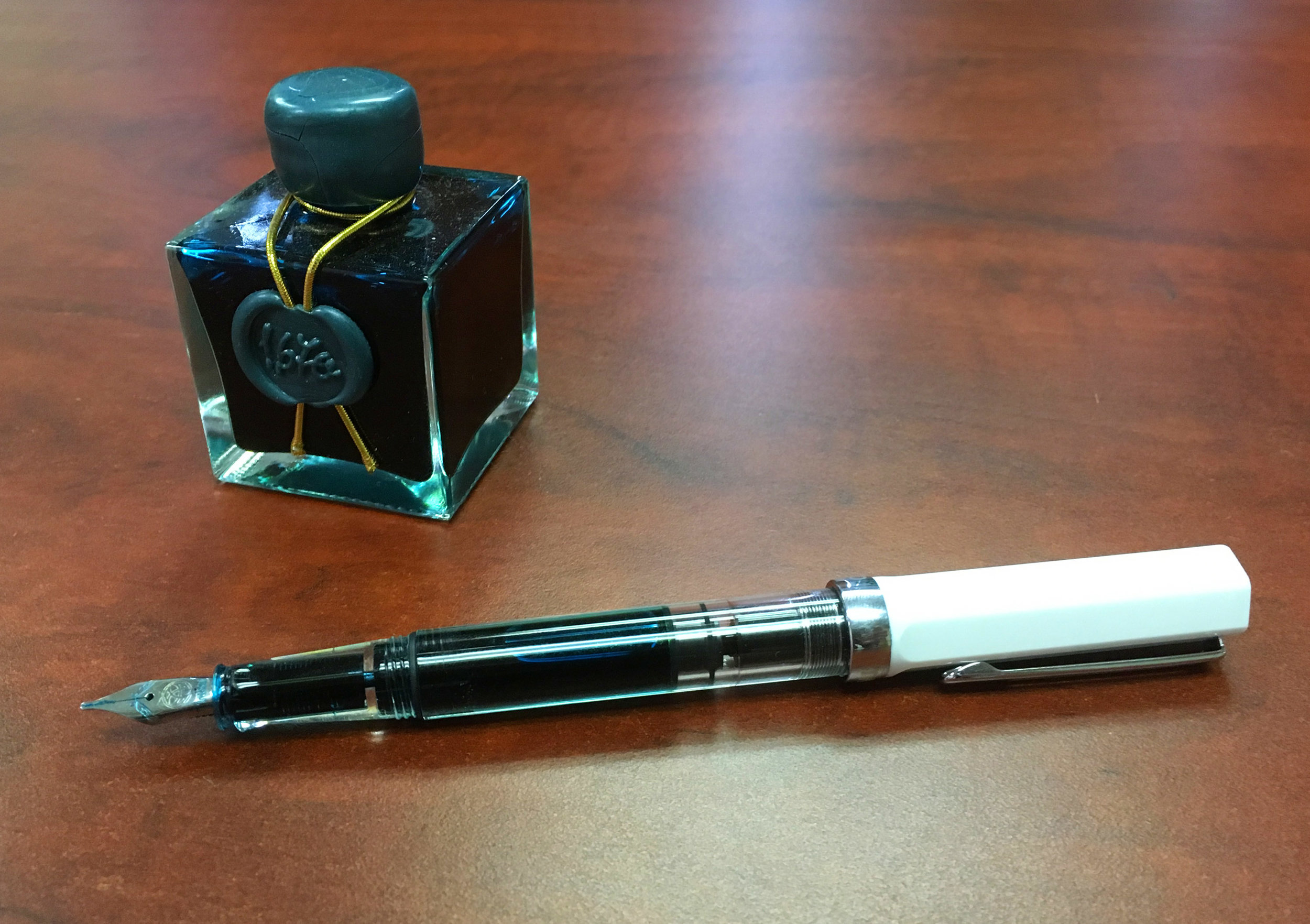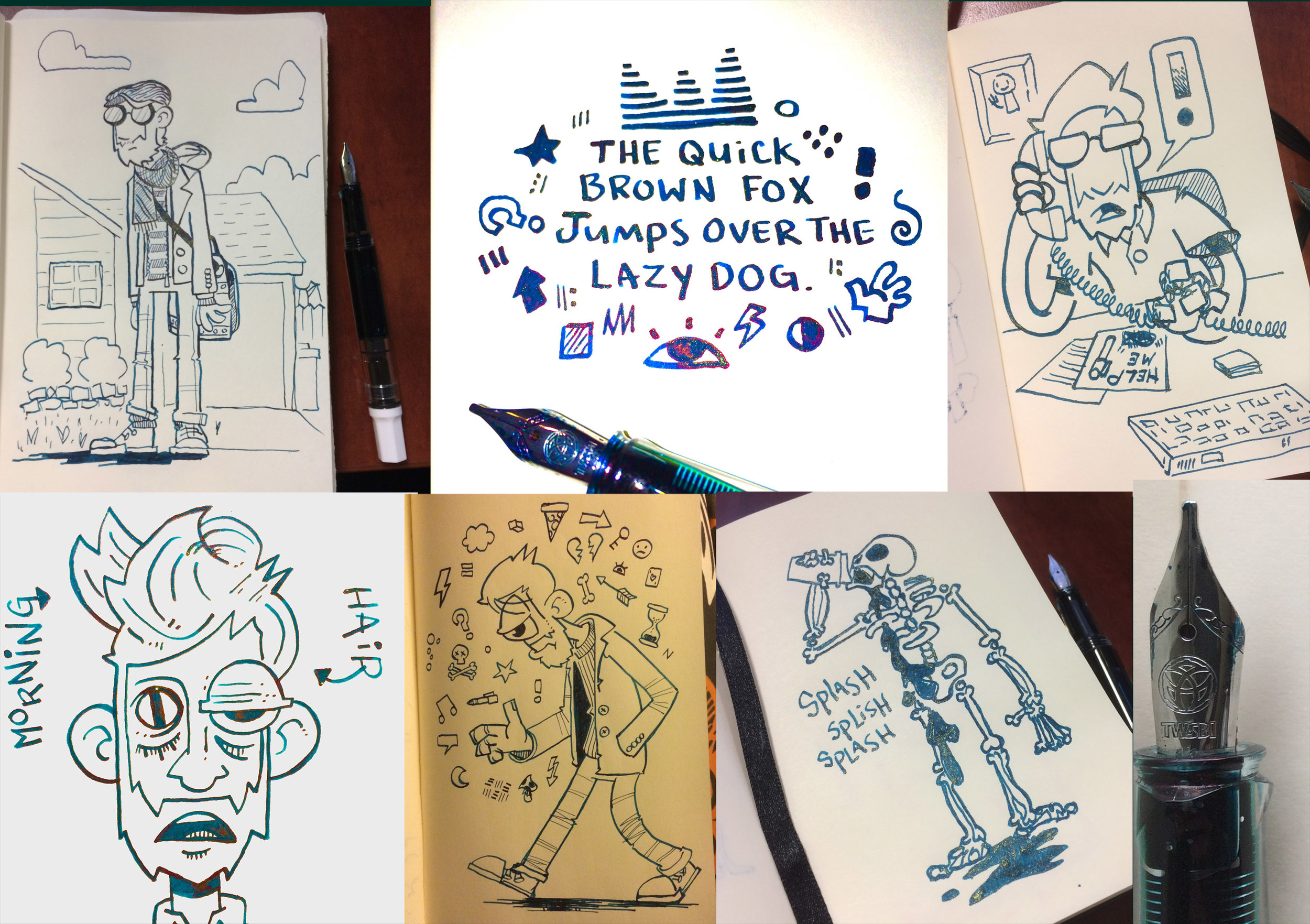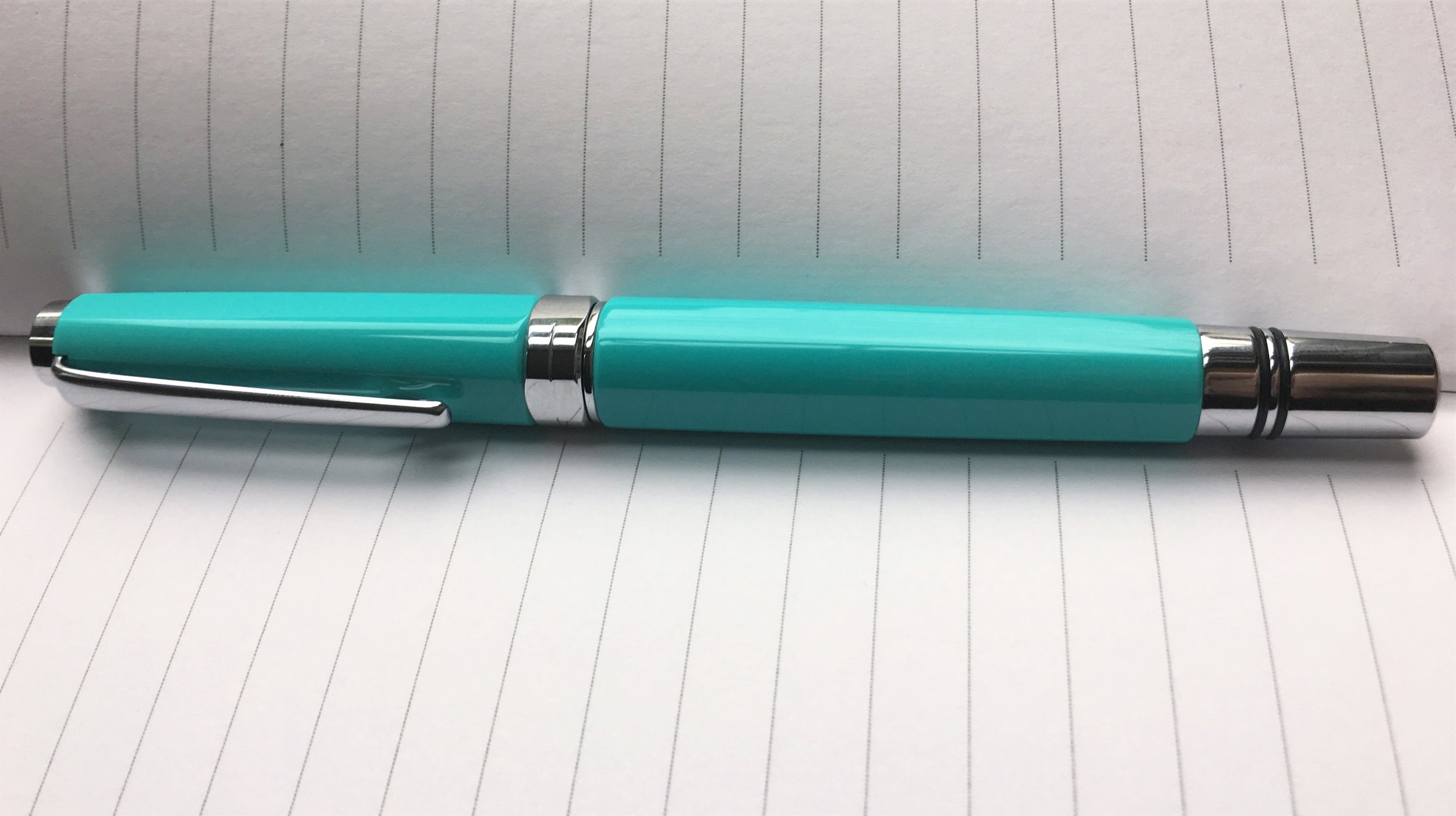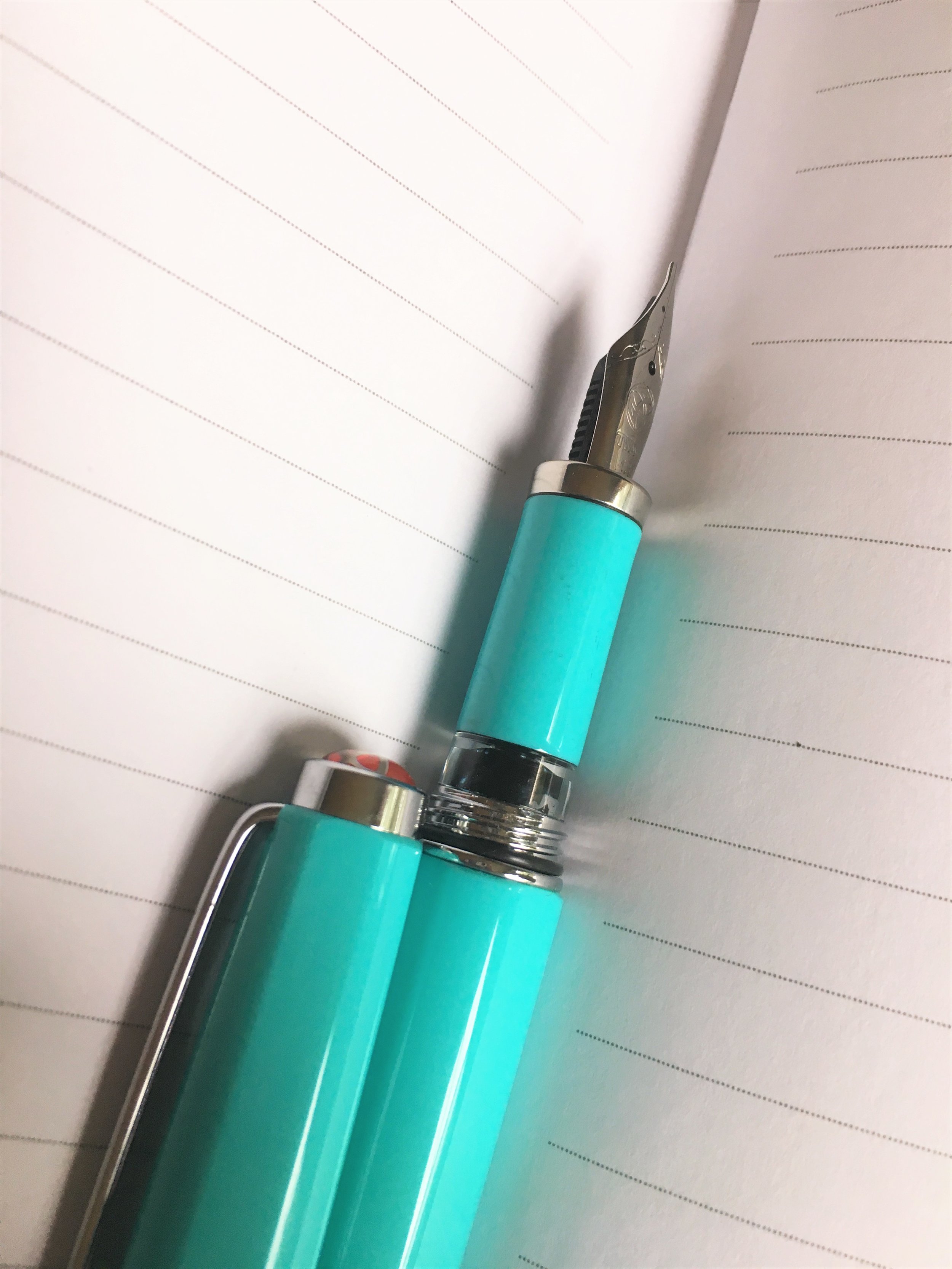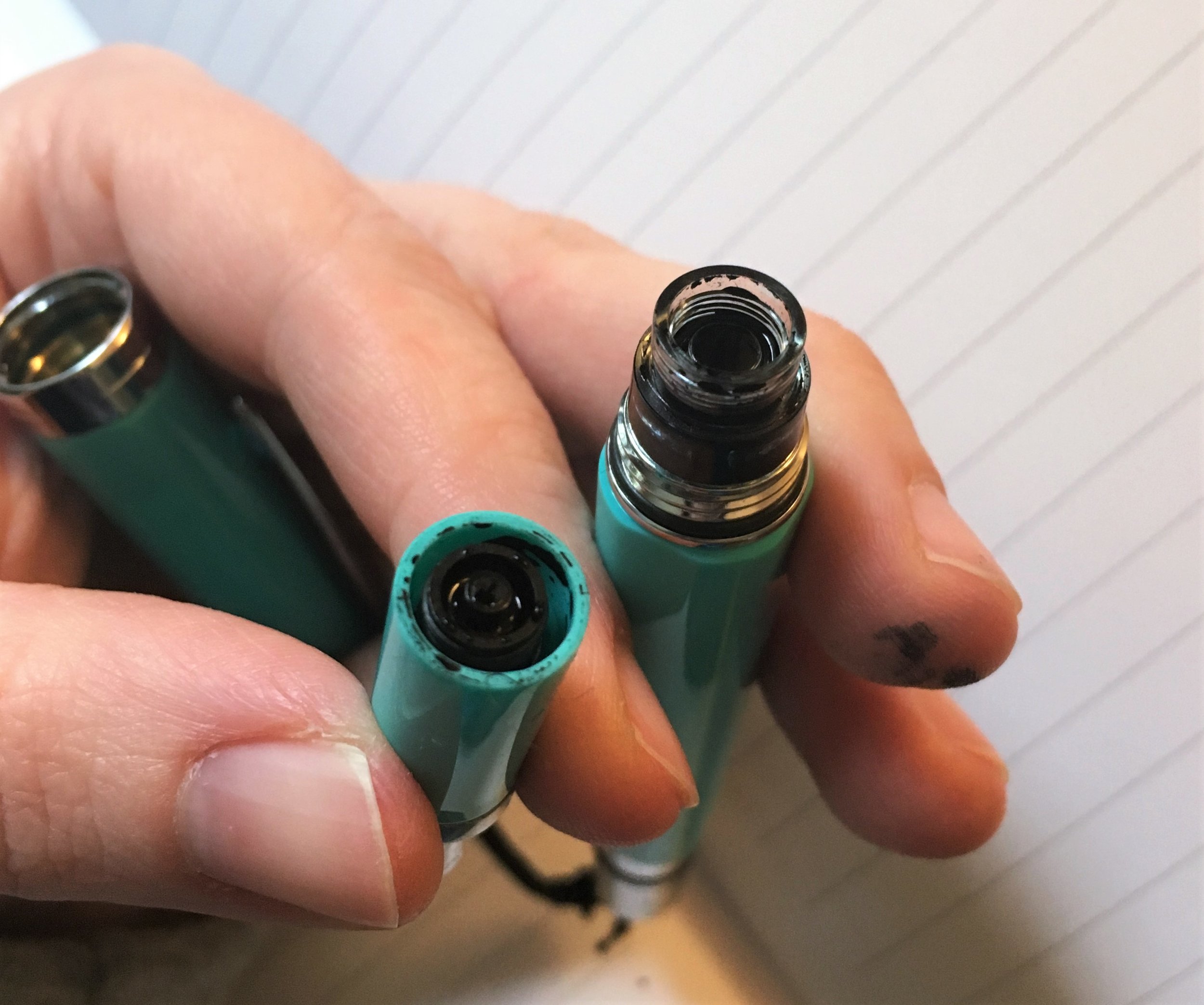(This is a guest post by Nick Folz. You can find more of Nick and his work on his blog, Smallberry Drive, Twitter, and Instagram.)
I am a waking, talking pen cliché of 2016. I bought my first fountain pen last year, along with bottle of ink. Which pen and ink? The TWSBI ECO and J. Herbin Emerald of Chivor. See what I mean about cliché?
The ECO is a beautiful instrument. I got the white model and love the look of the white details with the clear barrel. The vacuum is super intuitive and easy to use. The clip is solid enough to be an everyday pocket carry. The pen is a bit long when the cap is posted, but not so much that I don’t post it anyway. The whole thing is pretty durable. From drops onto concrete to shoving the cap on instead of threading it, it has taken a beating but is no worse for wear. The weight is good, and it feels as good as it looks. I often found myself just holding it or fiddling with it in meetings. It grabs attention as well, a whispered “what pen is THAT?” or “can I try writing with it?” were not uncommon. At this super forgivable price point, I can’t think of a reason not to recommend this if you are interested in the least.
I went with the 1.1 Stub nib. I write rather large, so the thick width doesn't bother me, but I can see how some might dislike it for writing. My first impression was that it is a joy to doodle with. I found myself sketching on post-its constantly. The ink flow is consistent and smooth. The nib is no doubt a huge factor here since stubs tend to have a juicier feel, or so I’ve heard.
Drawing is just like writing; people have different priorities and preferences. I value line width variation above almost everything else. I love the dynamic range of the stub. Being mindful with the nib can get you fine detail lines or thick bold ones. I love pulling straight down and getting a wide line and then, not lifting the pen, changing the direction of the line 90 degrees to get a hair thin line. Changing direction to dictate line thickness is fun and adds a ton of variety. I imagine I would really dig a flex nib, but I like the predictability of the stub. I often would sketch freely, without being mindful of line weight, then going back in with adding thickness later.
My main draw to fountain pens was bottle inks, I use lots of India inks and acrylic inks with brushes, but wanted to try out the other side ink world. Plus I really like the atheistic of bottle inks and fountain pen inks are some of the most beautiful bottles in the world. J. Herbin really outdo themselves in packaging. The box is wonderfully decorated but nothing worth saving, the bottle is the main show, with it’s wax seal, gold string, and cube angles. I have mine on my desk at all times; it is too pretty to put in a drawer. Filling the pen is a joy, the barrel of the ECO fits perfectly into the bottle opening. It is a pleasant ritual that I enjoy, and have a hard time believing that I would ever find similar joy in replacing a cartridge. It is not waterproof, but that’s not the end of the world. It can actually be blended with water if you are careful about it. The stub nib really lets this ink shine, literally. It is a thing of beauty just to watch the ink dry as you make lines. I filled sheets and sheets of hatch marks when I got this pen, almost hypnotized. It dries quick enough to sketch with and looks like nothing else out there.
I’m a doodler first, writer second. If something doesn’t work for drawing it doesn’t last in my pocket. I had the TWSBI ECO as my pocket pen for about 3 months, then I went to switch back to a lead holder. It lasted two days before the TWSBI was back in my pocket. I missed it too much. I don’t have much negative to say, even my criticisms have positive notes:
· I sometimes hate that I have to twist off the cap, but I love the security of a twist cap.
· I wish I had an erasable option, but I love watching the liquid ink dry before my eyes as I draw.
· I miss the utilitarian metal pencil body, but not as much as I love watching that beautiful emerald ink slosh around the clear barrel of the ECO.
The ECO has lasted over six months as my main carry, and if it broke tomorrow I’d be placing an order for another of the exact same. The J. Herbin bottle sits proudly at my desk, and even after several refills I have so much left that I haven’t gotten wistful yet. I can’t think of a better recommendation than that.
(JetPens provided this product at no charge to The Pen Addict for review purposes.)
Enjoy reading The Pen Addict? Then consider becoming a member to receive additional weekly content, giveaways, and discounts in The Pen Addict shop. Plus, you support me and the site directly, for which I am very grateful.
Membership starts at just $5/month, with a discounted annual option available. To find out more about membership click here and join us!

